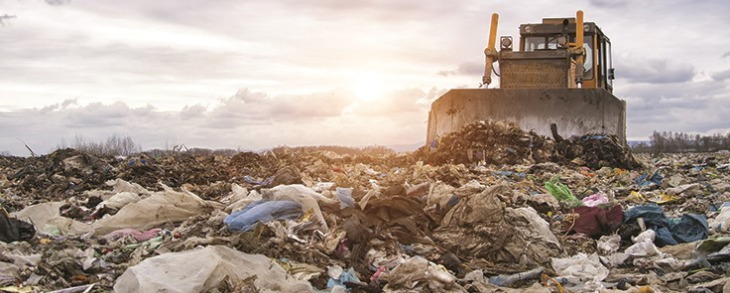Waste storage centers are places where waste is stored that cannot be recycled or recovered for energy, in order to control its effects on the environment. At least this is done under economically acceptable conditions at the moment when this waste is placed there.
Waste storage centers are also known by the simple name of landfill, which they were called before in the 1970s, then some regulations came about to impose some limits on the deposit or burial of waste. They then took the name of a technical landfill which sometimes still sticks to their skin.
The landfill, or waste storage center, is the oldest way to get rid of waste. In some countries, like in Dakar, Senegal for example, it is used almost exclusively.
Waste is stored according to its nature
There are three main types of disposal centers, depending on the nature of the waste that is admitted to it
The so-called class 1 storage centers: also called hazardous waste storage facilities (or centers). They receive, under strict conditions (specific equipment and sealing systems) dictated by regulations, classified installations for environmental protection, what is called special industrial waste. This waste is dangerous for the environment and or for living beings. Before being buried, they undergo treatment aimed at stabilizing them.
The so-called class 2 storage centers: also called storage facilities for non-hazardous and assimilated household waste, or ultimate waste storage centers. They generally receive waste, even industrial waste, which cannot be treated differently, under the technical and economic conditions of the moment. These centers are subject to strict regulations relating to their design, construction, operation and even post-operation.
So-called class 3 storage centers: also called inert waste, rubble and spoil storage facilities. They are mainly intended for building and public works waste. They are also incorporated into state legislation aimed at minimizing their impact on the environment.
 Depending on the country, the waste management practices in place are more of less safe and advanced. It is clear that good waste management requires investment and technology, that countries like the United States have, but that some developing countries could be lacking, leading to unnecessary pollution.
Depending on the country, the waste management practices in place are more of less safe and advanced. It is clear that good waste management requires investment and technology, that countries like the United States have, but that some developing countries could be lacking, leading to unnecessary pollution.
Generate electricity from waste
A power plant based on the combustion of managed waste will be installed in the Mahboobnagar district in Andra Pradesh. This 6.6 MW power plant was developed by Selco International, Hyderabad.
With 700 tonnes of waste (1/3 of daily waste from Hyderabad), the plant will supply 5.9 MW of electricity to the local distribution company which will buy it at $0.07 per unit and the municipality of Hyderabad will provide it free of charge waste for the next 30 years.
This model of power plant can be installed everywhere and represents a solution to the overabundance of household waste that clogs cities and poses serious health problems. In addition, this plant has an air cooling system instead of conventional water cooling and the derivatives produced by the combustion of waste are minimal and ecological because reused for other applications.
5 million dollars were invested in this project including 2.5 million dollars from the Technology Development Board, Department of Science and Technology, and 1 million from the Technology Information Forecasting and Assessment Council.
Selco has patented this technology and will sign a contract for thirty two thousand dollars for the transfer of technology with an English company.
